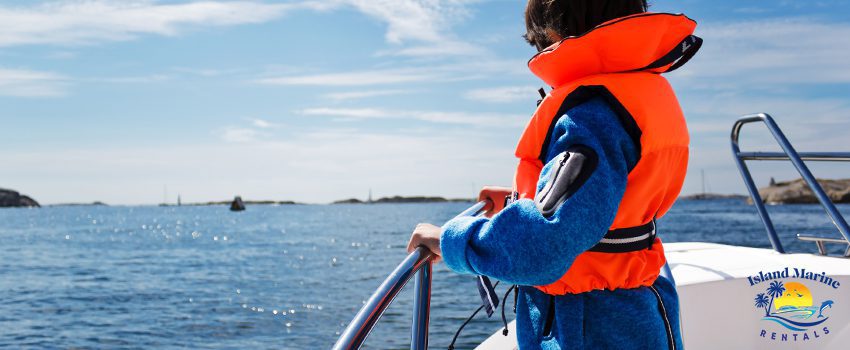Whether it’s boating, kayaking, or jet skiing, there are tons of waterborne activities to try.
While it’s fine and dandy to focus on having fun, you still have to consider every potential hazard. Aside from drowning, you can sustain injuries — some of which can severely damage your head and bodily functions.
For that reason, it’s essential to review the best safety and injury prevention techniques to fully enjoy your time on the water without worrying about the imminent hospital bill. Having fun shouldn’t be followed by a crippling price tag.
Water Safety and Injury Prevention Tips
Here are some tips to ensure safety and avoid injuries:
1. Learn How to Swim
No matter how often you go out on the water, knowing the basics of keeping yourself afloat is one of the best water safety and drowning prevention tips, especially in strong currents. There’s no telling what will happen in the open seas, so it’s always best to be prepared for the impossible. Do keep in mind, however, that knowing how to swim does not allow you to save someone from drowning without the proper equipment, segueing into the next tip.
2. Always Wear a Personal Flotation Device
Having a personal flotation device can be the difference between life and death. There are times when the wind and water come swift and sudden, making it impossibly difficult to swim back to your vessel, especially when it floats away faster than you can paddle. Such a scenario has led to numerous well-documented celebrity deaths already. With a life jacket, you can ensure that you’ll stay afloat in the water until rescue comes.
Based on 2018’s statistics, there were 633 boat-related fatalities recorded in the United States alone. Seventy-seven percent were due to drowning, and, of those who drowned, 84 percent weren’t wearing a PFD.
3. Bring a Companion
As much as possible, always take someone with you. Never sail or swim alone. While it’s not rare to see people going solo fishing, jet skiing, or boating, you have to be practical and be prepared for the worst, even if it’s unlikely to occur. In case one of you suffers an accident, there will be another to cover for them. Plus, when you bring loved ones, you have people to share the fun and excitement with.
4. Pack a Survival Kit
One of the best ways to prepare for injuries is by packing a survival kit.
Bring essentials that can help you prevent and address different problems, such as:
- First Aid Supplies
- Food and Water
- Repair Tools
- Prescription and Seasickness Pills
- Flashlights
- Sound and Visual Signaling Devices
- GPS
- Gloves
- Phones or VHF Radios
5. Properly Store Water Toys and Other Equipment
Another tip on how to prevent water sports injuries is to keep everything secure and fastened. Always check everything before, during, and after each trip. Watercraft and other equipment, such as towable tubes, paddle boards, paddles, and wake boards, can be more trouble than they’re worth when left to run amok in foul weather.
6. Plan and Prepare
Preparing a float or trip plan should be paramount before venturing out. Float plans include essential information, such as your route, expected time of return, and emergency contacts. This information helps the appropriate authorities and rescuers know that someone’s out there who might need help so they can provide a speedy response.
If you’re wondering who should prepare float plans, the answer is everyone — specifically, everyone who plans to spend time on and in the water: boaters, canoeists, kayakers, sport fishers, and skiers included.
7. Exercise Beforehand, and Stay Hydrated
To those asking, “Does stretching prevent water sport injuries?” Yes; it does. Treat water sports like any other activity, and warm up before you head out. By stretching and revving up your body, you increase your range of motion and stamina.
Another thing you might not think of as an injury prevention tip is staying hydrated. The body’s musculoskeletal system works best when it isn’t parched and crumbling into dust. This helps prevent cramps and strains. Just being in the water does not count towards internal hydration. Aside from water, you can also bring electrolyte-infused drinks to stay hydrated. Just watch your sugar intake.
8. Look Out for Weather Changes
Harsh weather conditions can be a source of many dangers. While constantly checking the forecast is a great everyday practice, the weather is and always will be unpredictable. The best thing to do is always be mindful of your surroundings when out on the water, so you can head to shore if anything raises any red flags.
9. Avoid Too Much Sunlight
Vitamin D is healthy for the body, but too much sunlight can spawn different problems, such as sunburns and skin cancer, especially at noon. Wear long-sleeved rash guards, and apply sunscreen, even to unexposed parts of the body. To prevent headaches and eye strain brought about by harmful ultraviolet rays, bring a hat and pair of sunglasses.
10. Don’t Get Drunk
A vital safety and injury prevention tip that should ring true for many as common sense is to avoid drinking alcohol before involving yourself in water activities. While self-intoxicating is a treat at the best of times, it numbs the senses and dulls the brain, making it a one-way ticket to the hospital when you’re caught off-guard in critical situations where quick thinking is a prerequisite.
Be Safe — Enjoy Your Time on the Water
Consider following these tips to keep your waterborne activities fun and safe, without compromising one or the other.
If you’re looking for the best water sports experience, look no further than Island Marine Rentals. We provide kayak, paddle board, and boat rentals in Clearwater, FL. Contact us for more details!


